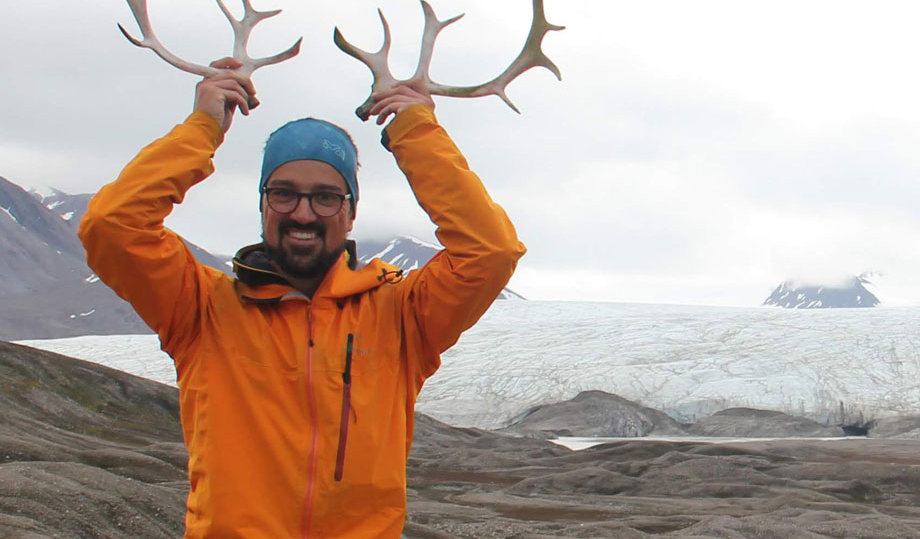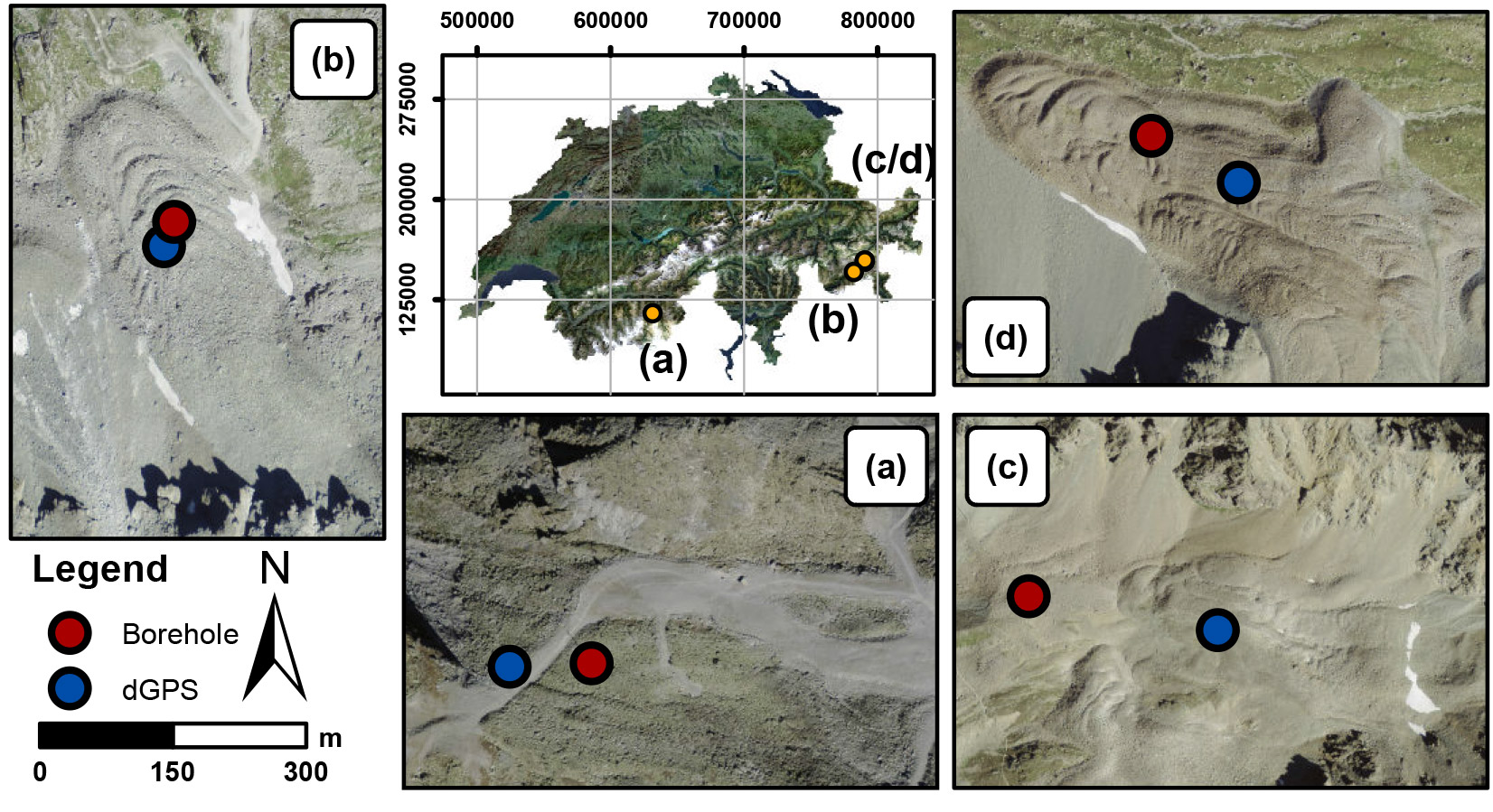Panta rhei - everything flows
In high alpine regions, ice keeps loose debris masses together. Alessandro Cicoira computes the influence of climate on rock glaciers as part of his PhD thesis.

Talking about glaciers, a lot of people associate glistening, blueish ice. But rock glaciers look completely different.
Right, at first glance you can only see the debris. Rock glaciers consist of loose rock material and soil that are held together by ice. They creep at a very slow rate downhill and develop typical structures, such as tongues and ridges. However, their origin and behaviour are different to ice glaciers.
What exactly are you studying?
I am interested in the dynamics of their movement. Actually, a lot is known about how the rock glaciers move, but not why. Many years of permafrost measurements are available in the Swiss Alps, particularly from the Swiss Permafrost Monitoring Network (PERMOS). In addition, for some rock glaciers we now have continuous data on their surface velocities via GPS measurements. However, some important questions are still open. What is the impact of rising temperatures? What is the influence of snow melt and rain? This is where my dissertation comes in.
Temperature - and thus heat conduction into the depths of the rock glacier - was for a long time considered to be the driving force for the flow variations of rock glaciers. These variations are observed between summer and winter as well as over several years. But reality is more complex. We are now investigating the influence of rain and snow melt on rock glacier dynamics. We developed numerical models and, in fact, water input into the glacier is mainly responsible for the seasonal flow pattern.
Why is this relevant?
Climate change will cause permafrost in high mountain regions to thaw into deeper layers. The ice will no longer stabilise fragile rocks and steep slopes, resulting in an increased occurrence of landslides and rock falls. Understanding these relationships is fundamental for effective natural hazard management.
How did you come to this topic?
I studied environmental engineering in Trento, Italy, with a focus on natural hazards. In the last year of my studies I worked on avalanche dynamics and then wrote my master thesis at the SLF in Davos. There I experienced a research culture which was very stimulating for me. The hierarchy was flat, everyone could bring in and implement new ideas. This awakened my desire to continue working in research. And geomorphodynamics is a very young research field. So, you soon have the opportunity to contribute something substantial.
You never studied glaciology. How did you gain this knowledge?
For example, at summer schools. One of them was in Spitsbergen. For five weeks we had theory, field work and also an individual research project. It was very exciting and very strenuous. We wanted to explore the impressive landscape even more and so we went hiking after dinner and came back for breakfast. It was daylight around the clock. But then I was all done!
I think these activities that you do in addition to the actual research work are very important. A PhD can also be done fairly 'quick and dirty'. But these courses and the associated networking give you a more holistic perspective. And there are so many possibilities! For example, I also did courses in project management, presentation techniques and voice training. This has a value that goes far beyond the PhD and helps me a lot for my professional and personal development.
And then you did another training as an avalanche blasting assistant.
Yes, that was during an internship at AINEVA, the Italian equivalent of the SLF. I had a lot of dreary work to do there, dig snow profiles, map avalanches and so on. Thus, it was a welcome change of pace. Learning how to handle the explosives was very interesting. But then only the boss was allowed to ignite!
Being out in the mountains is what accompanies me all my life. When I was still living in South Tyrol, I frequently guided children and teenagers on hiking and glacier tours. Now I am particularly passionate about ski touring. If possible, I'm out every weekend.
Cicoira, A, Beutel, J, Faillettaz, J, Gärtner-Roer, I, and Vieli, A: Resolving the influence of temperature forcing through heat conduction on rockglacier dynamics: a numerical modelling approach, The Cryosphere Discuss, https://doi.org/10.5194/tc-2018-176, in review, 2018.
Swiss Permafrost Monitoring Network (PERMOS)
Alessandro Cicoira
Glaciology and Geomorphodynamics, Department of Geography, UZH
